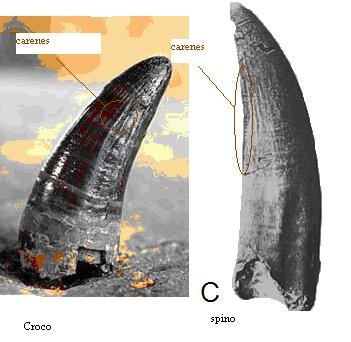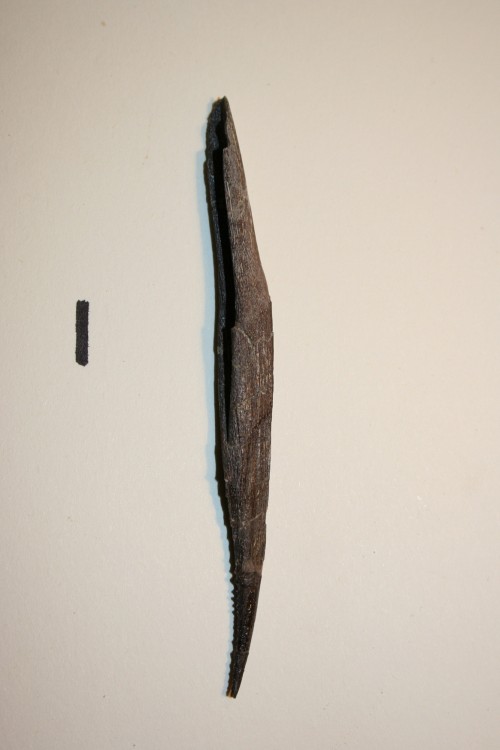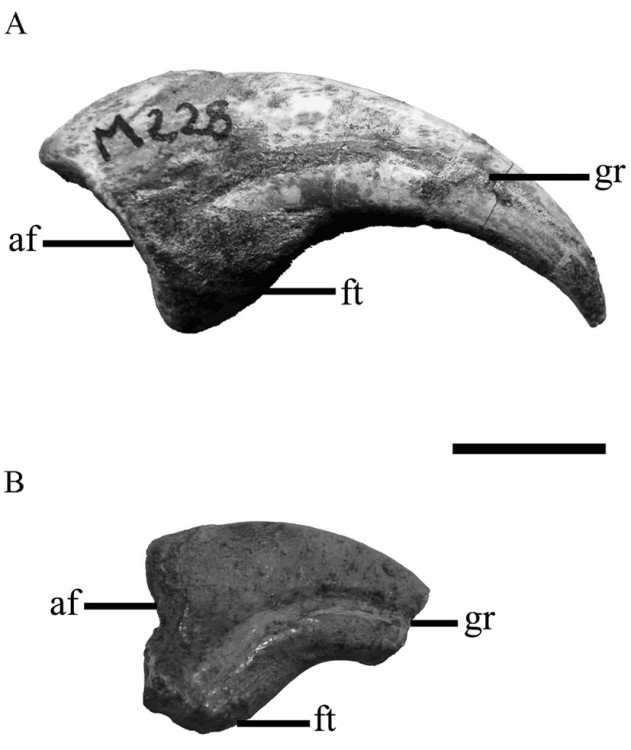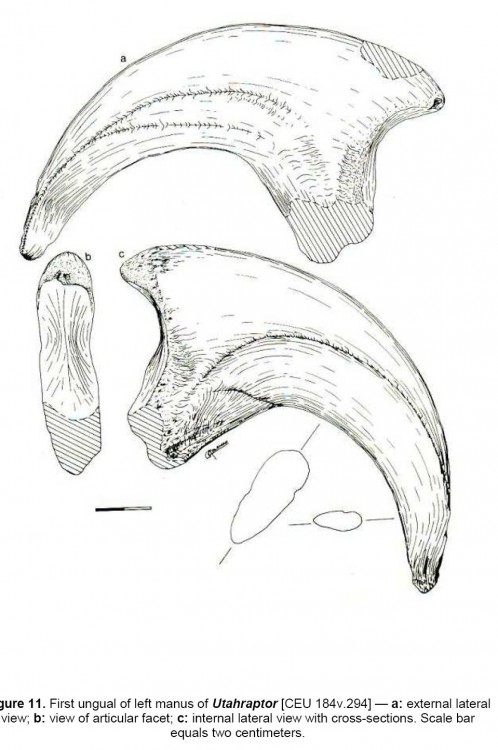Quelques-uns des principaux sujets de Géoforum

▲ Vente et achat de minéraux français et cristaux du monde sur Internet ▲ |

Vente et achat de minéraux sur Internet
Voir le nouveau contenu de Géoforum

Vari
Membre-
Compteur de contenus
520 -
Inscription
-
Dernière visite
Type de contenu
Profils
Forums
Galerie
Blogs
Boutique
Tout ce qui a été posté par Vari
-
Non non du dino ca ira trés bien
-
Surtout avec ce qui sort en se momment comme publication, nouveau alvarezauridae, couleurs des dino plumeux etc... ca y va ces temps ci
-
Si certains sont interessé par cette publie me contacter par mails.
-
Il a une bonne liste bibliographique, de se que je sais déja de l'évolution celui ci en fait un bon résumé facile d'accés, avec des schémas etc, franchement bien foutu, aprés ca plait ou ça plait pas, je le trouve trés bien ça évite de se promener avec une vingtaine de bouquin sur l'évolution je dirais. Et surtout de belles illustrations d'Alain, bref 35 euro c'est pas la mer à boire pour plus de 500 pages! C'est tout de meme sous la direction de Lecointre, et si ca peut te rassurer on ne parle pas de miocene dans le bouquin mais bien de l'eocene
-
Un bon bouquin avec des illustrations splendide, qui pour ceux qui se posent se genre de questions trouveront des réponses: http://www.paleospot.com/actualite.php?actu=20
-
Je ne me rappelle plus de la référence je crois publier dans Nature, la quantité d'espèces fossiles est estimée à : Nb d'espèces par biochrone x Nb de biochrones =(5 \times 10^6) \times \frac{545 \times 10^6}{2,75 \times 10^6}= 991 \times 10^6 voir: http://fr.wikipedia.org/wiki/Fossile Oui l'évolution artificielle est un trés bon fait pour la théorie de l'évolution, mais il faut regarder un ensemble de faits qui prouve l'éxistence de cette théorie qui reste celle ou s'emboite le mieux, tout simplement. Un grand puzzle appelé "Evolution" ou chaque pieces serait un fait, le registre fossile, l'evolution artificielle etc... formant chacun une piece et c'est dans se puzzle qu'elle s'emboite le mieux voila pour la petite métaphore.
-
L'absence de fossile intermédiaire. Alors il faut savoir quelques petites choses, de un la fossilisation est un phénoméne extrémement rare, les fossiles représenteraient un pourcentage inférieur à 10% des especes ayant vécu! Ensuite il ne peut y avoir de fossile intermédiaire, le fameux "chainon manquant" n'éxiste pas, il s'agit d'un abus de language. 2tant donné que nos chers fossile n'entretenaient pas de registre d'état civil, l'ancetre d'un taxon ne peut etre identifié précisement. En phylogénie, nous avons donc des ancetres hypothétiques (jonction des branches), abstraits et des descendants concrets (le cas de nos fossile). Le temps écoulé, le manque de registre fossile etc.. font que l'identification d'un ancetre est hors de notre portée. Cela dit l'évolution à été observer à l'échelle humaine, chaque jour l'agronomie et les pharmaceutique l'utilise (selection artificielle), de meme le cas du Podarcis sicula (lézard) et bien d'autres exemples. Ces deux preuves que sont la phylogénie et la selection artificielle nous montrent des faits qui font que la théorie de l'évolution existe, tout comme nous admettons l'existence de divers batailles historique.
-
You, H.-L. and D.-Q. Li. 2009. A new basal hadrosauriform dinosaur (Ornithischia: Iguanodontia) from the Early Cretaceous of northwestern China Can. J. Earth Sci. 46(12): 949-957 Résumé: A new hadrosauriform dinosaur, Jintasaurus meniscus gen. et sp. nov., is reported from the Lower Cretaceous Xinminpu Group of the Yujingzi Basin, Jiuquan area, Gansu Province, northwestern China. It is represented by an articulated posterior portion of the skull and is unique in having an extremely long, pendant and crescentic paroccipital process with its ventral tip projecting far beyond the ventral level of the occipital condyle. Phylogenetic analysis recovers Jintasaurus as the sister-taxon to Hadrosauroidea, more derived than other Early Cretaceous hadrosauriforms and Protohadros from the early Late Cretaceous of North America. This discovery adds one more close relative to Hadrosauroidea in Asia and supports an Asian origin for this group. Diabloceratops eaton New Basal Centrosaurine Ceratopsian Skulls from the Wahweap Formation (Middle Campanian), Grand Staircase - Escalante National Monument, Southern Utah / James I. Kirkland and Donald D. DeBlieux A paraitre dans "New Perspectives on Horned Dinosaurs: The Royal Tyrrell Museum Ceratopsian Symposium", en attendant le bouquin...
-
Hollanda luceria nouvel oiseau contemporain de velociraptor: l'article: http://dx.doi.org/10.1016/j.cretres.2009.09.001 L'hallux est rétroversé comme la plupart des oiseaux actuels, formant une empreinte type passerau (3 doigts en avant un le premier doigt en arrière). On est donc en présence d'un prédateur terrestre nichant au sol, mais descendant d'un ancêtre arboricole.
-
O Museu da Lourinhã vai organizar dois Mini-simpósios de Paleontologia nos próximos sábados 16 e 23 de Janeiro de 2010. A entrava é livre e aberta a todos! 8th Mini-Symposium on Paleontology January 16th, 2010, Saturday Museu da Lourinhã 10:50 Octávio Mateus - Welcome 11:00 Christophe Hendrickx – A short introduction on evolution (part I) [60 min.] 12: 00 Emanuel Tschopp – Stegosaurs from Big Horn Basin, Wyoming, USA [40 min] Lunch Break 14:30 Octávio Mateus – The Cretaceous skeleton coast of Angola [60 min] 13:30 Ricardo Araujo – Cranial musclature reconstruction in reptiles and biomechanical inferences in plesiosaurs [60 min] 16: 30 Eliza Jarl Estrup – Relation between blood and metabolism [15 min] Break 17: 00 Christophe Hendrickx – A short introduction on evolution (part II) [60 min] 18:00 Bruno Pereira – Paleontology of equinoderms and new data from Portugal [40 min] 9th Mini-Symposium on Paleontology January 23rd, 2010, Saturday Museu da Lourinhã 14:30 Nuno Ferrand de Almeida – Recent evolution of Iberian herpetofauna 15:30 Octávio Mateus – Two paleontological projects: Portugal and Angola 16:30 Christophe Hendrickx – Diversity and disparity of sauropod dinosaurs 16:45 Emanuel Tschopp – The feet of a Camarasaurus (Dinosauria: Sauropoda) www.lusodinos.blogspot.com
-
Identification fossile
Vari a répondu à un sujet de phrollin dans Demandes d' identification de fossiles
Meme avis qu'Elasmo, pas croco à mon avis (absence de carenes marquées) le morphotype ressemble plus à du plio qu'a du croco en effet, s'affine beaucoup plus vers l'apex (la pointe) par rapport a du croco. Difficile de déterminer un animal avec une dent. Pour moi reptile marin (plio serait plus proche je pense que ichtyo), croco à ne pas écarter tout de meme. Ramenes nous le reste du crane on saura t'en dire plus -
Quelques nouveautées: Farmer, C.G., and K. Sanders. 2010. Unidirectional airflow in thelungs of alligators. Science 327(5963):338-340. The lungs of birds move air in only one direction during bothinspiration and expiration through most of the tubular gas-exchangingbronchi (parabronchi), whereas in the lungs of mammals and presumablyother vertebrates, air moves tidally into and out of terminalgas-exchange structures, which are cul-de-sacs. Unidirectional flowpurportedly depends on bellowslike ventilation by air sacs and mayhave evolved to meet the high aerobic demands of sustained flight.Here, we show that air flows unidirectionally through parabronchi inthe lungs of the American alligator, an amphibious ectotherm withoutair sacs, which suggests that this pattern dates back to the basalarchosaurs of the Triassic and may have been present in theirnondinosaur descendants (phytosaurs, aetosaurs, rauisuchians,crocodylomorphs, and pterosaurs) as well as in dinosaurs. Brusatte, S.L., Chure, D.J., Benson, R.B.J., and Xu, X. 2010. The osteology of Shaochilong maortuensis, a carcharodontosaurid (Dinosauria: Theropoda) from the Late Cretaceous of Asia. Zootaxa 2334:1-46. ABSTRACT: Large-bodied theropod dinosaurs from the Early-mid Cretaceous of the northern continents (Laurasia) are poorly known. One of the most complete and intriguing theropods from this interval is Shaochilong maortuensis Hu, 1964 from the Turonian (< 92 Ma) Ulansuhai Formation of Inner Mongolia, China. The phylogenetic placement of Shaochilong has long been a subject of debate, as it has been referred to several disparate theropod groups (e.g., Megalosauridae, Allosauridae, Tyrannosauroidea, Maniraptora). In a recent taxonomic reassessment, Shaochilong was identified as the first Asian member of Carcharodontosauridae, a clade of allosauroid theropods that was once thought to be restricted to Gondwana and includes some of the largest terrestrial predators to ever live. However, the characters supporting such a placement were only briefly discussed, and a full anatomical description of Shaochilong has yet to be presented. We provide a detailed osteological description of the lectotype and paralectotype series, show that Shaochilong is a smallbodied and short-snouted carcharodontosaurid, and highlight numerous cranial features shared with other carcharodontosaurids. We argue that the vicariant hypothesis of allosauroid biogeography, in which lineages split in concert with the fragmentation of Pangaea, is poorly supported. Finally, large-scale patterns of theropod evolution and faunal replacement are discussed, and it is argued that allosauroids persisted as large-bodied predators later in the Cretaceous than previously thought. Alifanov, V. R. & Bolotsky, Y.L. (2010) Arkharavia heterocoelica gen. et sp. nov., a New Sauropod Dinosaur from the Upper Cretaceous of Far Earstern Russia Paleontological Periodical № 1, с. 76–83 Rauhut, O.W.M., Milner, A.C. and Moore-Fay, S. (2010). "Cranial osteology and phylogenetic position of the theropod dinosaur Proceratosaurus bradleyi (Woodward, 1910) from the Middle Jurassic of England". Zoological Journal of the Linnean Society, published online before print November 2009. doi:10.1111/j.1096-3642.2009.00591.x
-
Texacephale langstoni, a new genus of pachycephalosaurid (Dinosauria: Ornithischia) from the upper Campanian Aguja Formation, southern Texas, USA Nicholas R. Longrich, Julia Sankey and Darren Tanke Cretaceous Research Article in Press, Accepted Manuscript Abstract Recent work in the Campanian Aguja Formation of Big Bend, Texas, has resulted in the recovery of two frontoparietal domes from a new genus of pachycephalosaur. Texacephale langstoni gen. et sp. nov. is diagnosed by a a tall, arched nasal boss, flange-like processes articulating the dome with the peripheral elements, and a low pedicel separating the cerebral fossa from the skull roof. The skull dome is composed largely of the fused frontals and parietals, with limited participation of the peripheral elements, and the supratemporal fenestrae remain open. Phylogenetic analysis indicates that Texacephale langstoni is a basal member of the Pachycephalosauria. The discovery of Texacephale supports previous suggestions that the dinosaur fauna of Texas was distinct from that of contemporary assemblages to the north. The phylogenetic analysis presented here indicates that the Asian pachycephalosaurs form a monophyletic group, deeply nested within the Pachycephalosauridae, and that the basal members of the group are all North American. This finding indicates that pachycephalosaurids originated in North America, rather than Asia, as previously believed. The high diversity of North American pachycephalosaurs and the late appearance of pachycephalosaurs in Asia are consistent with this hypothesis. The biology of Texacephale and other Pachycephalosauridae are also discussed. The morphology of the dome in Texacephale and other pachycephalosaurs supports the hypothesis that pachycephalosaurids engaged in intraspecific combat, while the occurrence of Texacephale and other pachycephalosaurs in nearshore deposits argues that the pachycephalosaurs were not restricted to inland habitats. http://www.sciencedirect.com/science?_ob=G...d39426aaf41a4d4 Une vertèbre de stégosaure (Dinosauria: Ornithischia) du Callovien (Jurassique moyen) de la Sarthe, Ouest de la France. Eric Buffetaut, Nicolas Morel, Comptes Rendus Palevol, Volume 8, numéro 6, pages 545-549 (septembre 2009). http://dx.doi.org/10.1016/j.crpv.2009.05.001 Et pour finir, histoire d'en parler un peu malgrés les faits, Sinornithosaurus venimeux?: http://systemanaturae.wifeo.com/actualites...thosaurus_venin
-
Pas de souci j'attends ton adresse par MP.
-
Et bien il y a les divers publication sur Cherves dont de nombreuses dents ont été récoltées, Voir les publication de Mazin, Pouech and all, j'ai ça en stock, la plus précise sur les dents de se gisement reste celle ci: MICROVERTEBRATE BIODIVERSITY FROM CHERVES-DE COGNAC(LOWER CRETACEOUS, BERRIASIAN: CHARENTE, FRANCE) by JOANE POUECH', JEAN-MICHEL MAZIN' and JEAN-PAUL BILLON-BRUYAT, Mesozoic Terrestrial Ecosystems 2006 p.96
-
Identification fossile
Vari a répondu à un sujet de phrollin dans Demandes d' identification de fossiles
Par exemple pour différencier une dent de croco et une dent de spinosaurus il suffit de regarder les carenes, celles ci sont dans le meme plan de courbure de la dent chez spino alors que chez le croco la carene est dans le plan perpendiculaire à celui de la courbure de la dent. Voici pour illustrer: -
Identification fossile
Vari a répondu à un sujet de phrollin dans Demandes d' identification de fossiles
Excusez moi, la carene est une sorte de plie de l'émail, le "bord tranchant" de la dent si l'on peut dire. -
Identification fossile
Vari a répondu à un sujet de phrollin dans Demandes d' identification de fossiles
Pourrions nous avoir des photos des carenes? elles semblent quasi inexistante, bizarre pour du gonio qui a tendance à en avoir de trés prononcé. Cela dit ca peut peut etre etre due à la place de cette dent par exemple une du premaxillaire. Pas évident... -
Les vertébré c'est plutot vague... question dino une bonne publication de Smith and all 2005, Dental morphology and variation in theropod dinosaurs: Implications for the taxonomic identification of isolated teeth.
-
Oiseau Wyoming
Vari a répondu à un sujet de ANDRE HOLBECQ dans Demandes d' identification de fossiles
Tu aurais une photo avec un meilleur zoom stp? -
Pour ma part tout dépend du fossile, certaines roches peuvent etre altéré par le soleil ou plutot favoriser le dévellopement bactérien (certains calcaire devenant noir par exemple), par expérience, la marne par exemple caille sous l'effet du soleil, j'ai un poisson du liban qui traine dehors depuis un an (manque de place pour stocker) mais il n'a pas bougé, cela dit je ne pense pas que se soit le soleil à proprement parlé qui dénature certains fossiles. Je pense pas qu'il risque grand chose à l'intérieur de ton salon, une petite couche de plexy et ca devrait le faire.
-
Je souhaiterais savoir si il existait un moyen de déterminé une taille approximative d'un Hybodus en se basant sur la taille de l'épine dorsale. Existe il un ratio? si oui lequel? De meme pour les épines céphaliques. Voici une épine dorsale d'Hybodus: Berriasien, 16
-
BONNES FETES NOTAMMENT DE NOEL
Vari a répondu à un sujet de Cornagoae dans Y'a pas que les Sciences de la Terre dans la vie...
Joyeux noël à tous et passez de bonnes fêtes!!! -
Identifications de fossiles
Vari a répondu à un sujet de NES dans Demandes d' identification de fossiles
Voir cette derniere publication en date sur les dromaeosauridae du sud de la France: New data on the Dromaeosauridae (Dinosauria: Theropoda) from the Late Cretaceous of southern France PHORNPHEN CHANTHASIT and ERIC BUFFETAUT, Bull. Soc. géol. Fr., 2009, t. 180, no 2, pp. 145-154. A lire aussi: A NEW GENUS OF DROMAEOSAURIDAE (DINOSAURIA, THEROPODA) FROM THE UPPER CRETACEOUS OF FRANCE RONAN ALLAIN and PHILIPPE TAQUET, Journal of Vertebrate Paleontology 20(2):404–407, June 2000 2000 by the Society of Vertebrate Paleontology The first record of dromaeosaurid dinosaurs (Saurischia, Theropoda) in the Maastrichtian of southern Europe : palaeobiogeographical implications by JEAN LE LCEUFF*, ERIC BUFFETAUT, PATRICKM ECHIN and ANNIEM ECHIN-SALESSY", Bull. Soc. gCol. France, 1992, t. 163, no 3, pp. 337-343 A NEW DROMAEOSAURIDE THEROPOD FROM THE UPPER CRETACEOUS OF SOUTHERN FRANCE, Jean LE lOEUFF and Eric BUFFETAUT, Oryctos, vol. 1: 105-112 Octobre 1998 Photo de griffes (A: griffe du pieds, et B: griffe de la main) ech: 1cm. -
Identifications de fossiles
Vari a répondu à un sujet de NES dans Demandes d' identification de fossiles





